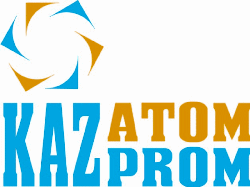Although there has been increased interest for retailers to enter the Indian markets, retail in India has remained in it infancy. One example is food distribution. This is done through small “Kirana Stores” or “public distribution shops.” Supermarkets or shopping centers, even according to Western patterns exist in India only in recent years. This has resulted in a highly restricted focus distribution shops.” on consumer needs, thus creating a problem for large scale foreign investments to spur growth.
Now despite a slow start, there is a modern Indian retail sector beginning to emerge. In 2006 although the industry went through a tremendous change foreign companies still did business in Cash & Carry up to 100 percent and single-brand stores up to 51 percent. In contrast, foreign investors continued operation of multi-brand stores, such as department store chains or supermarkets in a limited sense.
It was therefore all the more surprising that the Indian Ministry announced for Industry and Commerce in the summer of 2010, to allow foreign retailers in the foreseeable future investments up to an investment limit of 49 percent in multi-brand trade. The government, combined with this step is incorporating involvement of external providers in order to modernize an inefficient trade system as well as the general infrastructure. However, with such a step only the legal barriers to entry are reduced. Foreign retailers will continue to have to deal with the fact that it is unclear whether India’s new retail formats, such as large supermarkets and discount stores, will come on board at all.
 Uranium is currently trading at prices not seen for months, and appeals to speculative investors like hedge funds to get started. As the U.S. consulting company Ux Consulting tells in her latest monthly report, yellow cake listed for immediate delivery was the third consecutive week at more than 48 dollars per pound (454 grams). Compared to the low of March 2010 is a price increase of 19 percent.
Uranium is currently trading at prices not seen for months, and appeals to speculative investors like hedge funds to get started. As the U.S. consulting company Ux Consulting tells in her latest monthly report, yellow cake listed for immediate delivery was the third consecutive week at more than 48 dollars per pound (454 grams). Compared to the low of March 2010 is a price increase of 19 percent. Many foreign funds are committed to investing in private companies . Mekong Capital said that it will create a new fund (Mekong III ) from 150 million this year to participate in the capital of non-state joint stock companies in Vietnam. Having made the investment in the company Tran Anh ASEAF mobilize capital to increase its share capital by 250 million dollars . SMEs are the target. “Vietnam is one of our six strategic markets for investment , ” said Doan Kien Doh , head of the representative office of Aureos Capital. “Within 10 years , Vietnamese companies will become the leading emerging companies in Southeast Asia. Private companies operating in many business sectors in Vietnam are helping to create investment opportunities for foreign funds,” said Paul Coleman, financial expert from Price Waterhouse Coopers Vietnam .
Many foreign funds are committed to investing in private companies . Mekong Capital said that it will create a new fund (Mekong III ) from 150 million this year to participate in the capital of non-state joint stock companies in Vietnam. Having made the investment in the company Tran Anh ASEAF mobilize capital to increase its share capital by 250 million dollars . SMEs are the target. “Vietnam is one of our six strategic markets for investment , ” said Doan Kien Doh , head of the representative office of Aureos Capital. “Within 10 years , Vietnamese companies will become the leading emerging companies in Southeast Asia. Private companies operating in many business sectors in Vietnam are helping to create investment opportunities for foreign funds,” said Paul Coleman, financial expert from Price Waterhouse Coopers Vietnam . Minister of National Economy and Deputy Chairman of the Financial Affairs and Energy Resources Ahmed bin Abdul Nabi Makki tomorrow ‘s visit to India to sign the final agreement with the Indian Oman Investment Fund – worth 5.1 billion dollars.
Minister of National Economy and Deputy Chairman of the Financial Affairs and Energy Resources Ahmed bin Abdul Nabi Makki tomorrow ‘s visit to India to sign the final agreement with the Indian Oman Investment Fund – worth 5.1 billion dollars.